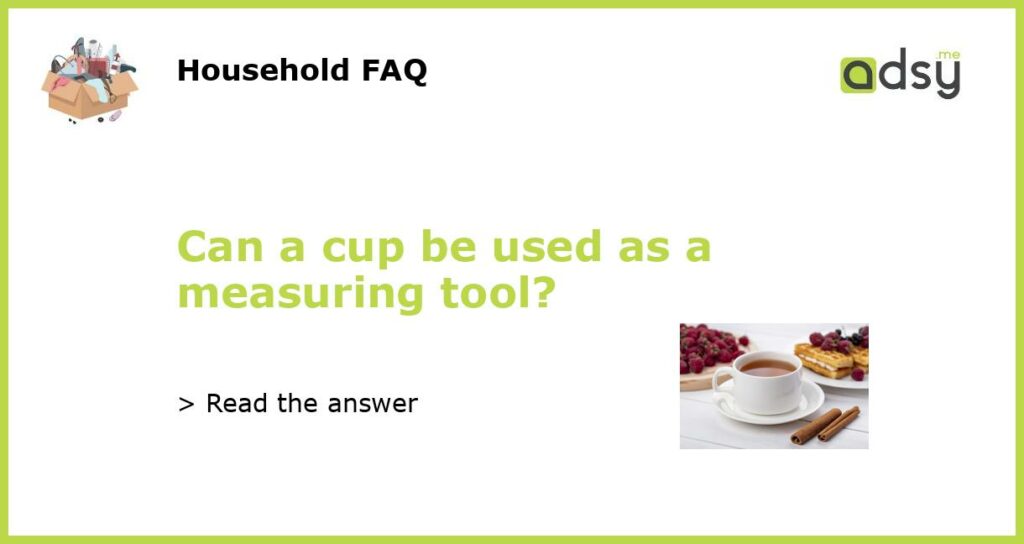Yes, a Cup can be a Practical and Convenient Measuring Tool
Measuring ingredients is an essential aspect of cooking and baking. Accurate measurements ensure that the final results of a recipe are consistent and delicious. While many kitchen tools and gadgets are specifically designed for accurate measuring, a simple cup can be a practical and convenient tool for measuring various ingredients. In fact, measuring cups are a staple in most kitchens and can be used to measure both liquid and dry ingredients.
Measuring Liquid Ingredients with a Cup
When it comes to measuring liquid ingredients, such as water, milk, or oil, a cup can be a reliable tool. Most cups have markings on the side indicating different measurements, usually in milliliters or fluid ounces. To use a cup for measuring liquids, all one needs to do is pour the liquid into the cup up to the desired mark. It is important to have a flat surface and to view the measurement from eye level to ensure accuracy. While a liquid measuring cup with a spout may offer more precise measurements, a regular cup can still provide reasonably accurate results.
Measuring Dry Ingredients with a Cup
Measuring dry ingredients, such as flour, sugar, or spices, can also be done using a cup. The most common method is known as the “scoop and level” technique. With this technique, one scoops the dry ingredient into the cup using a spoon or scoop, and then levels off the excess with a knife or straight edge. This ensures that the right amount of the ingredient is being measured. While a more precise scale or measuring spoon may be necessary for certain recipes that require specific measurements, a cup can be a convenient option for everyday cooking and baking.
Consistency and Familiarity
One of the advantages of using a cup as a measuring tool is that it provides consistency and familiarity. Many recipes use cups as a standard measurement, making it easier to follow and replicate the recipe. Additionally, most people are familiar with the concept of a cup and have one readily available in their kitchen. This makes it a practical choice for measuring ingredients, especially for casual home cooking.
Adapting Measurements for Accuracy
While a cup can be a reliable measuring tool, it is important to note that not all cups are created equal. Different brands or models of cups may have slightly different capacities, which can affect the accuracy of measurements. It is recommended to use the same cup consistently when measuring ingredients to maintain consistency in a recipe. If using a cup for precise baking measurements, it is also advisable to lightly spoon the dry ingredient into the cup rather than packing it down, as this can lead to inaccuracies.
In conclusion
A cup can indeed be a practical and convenient measuring tool in the kitchen. It can be used for measuring both liquid and dry ingredients, providing reasonably accurate results for everyday cooking and baking. While more precise tools may be necessary for certain recipes, a cup offers consistency and familiarity, making it a reliable option for many home cooks. By understanding its limitations and adapting measurements for accuracy, a cup can be a valuable tool in any kitchen.






